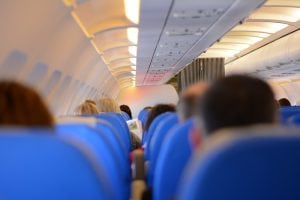
There are few people in this world who actually enjoy the experience of air travel. Flying is stressful, often rushed and filled with unexpected interruptions.
For wheelchair users with very limited mobility, and their families, flying in a plane is wrought with inaccessibility. The obstacles are often small, but sometimes they can turn into nightmares. A quick search of news archives will reveal the struggles that passengers with disabilities have faced – one was even forced to crawl off a United flight nearly a year ago.
At the very best, air travel for wheelchair-using passengers is a big-old nuisance. But we’re not here to talk about the pains of air travel.
We prefer to focus on solutions, which is precisely what Beneficial Designs, a flight test lab based out of a hangar at the Minden-Tahoe Airport in Nevada is working on.
Creating a New Way to Board
Beneficial Designs is one of only two flight test labs in the country. Recently, they have shifted their focus towards wheelchair transfer technology on airplanes.
In short, they are working on a lift to help wheelchair users with very limited mobility transfer from their chair to their airline seat.
Can you guess why this caught our eye? You see, we have quite a love for wheelchair lifts. We even designed and manufactured our own van wheelchair lift, which we still use in our wheelchair vans today.
How the Technology Works
There are two different options that the lab is working with. The first would attach to the overhead storage bins in the plane’s cabin, creating a support strap that passengers who have use of their arms and hands to grab ahold of.
The second uses a structural rail that spans from one side of the storage bins to the other side of the aisle. It attaches to a trolley that slides on a rail and acts as a lift system. This is more ideal for passengers with very limited mobility.
Peter Axelson, the director of research and development at Beneficial Designs told The Record Courier that an estimated 10 percent of wheelchair users have fallen out of airline boarding chairs, prompting his interest in wheelchair transfer technology.
The design lab is also working on devices that allow wheelchair users to rest their feet on during flight to make them more comfortable and help to prevent pressure sores.
The Paralyzed Veterans of America’s Research Foundation is helping to fund the research and development on the new technology, which will hopefully transform the way in which people with disabilities travel in the near future.
How would you like to see airlines make travel more accessible? Join the conversation by commenting below!
